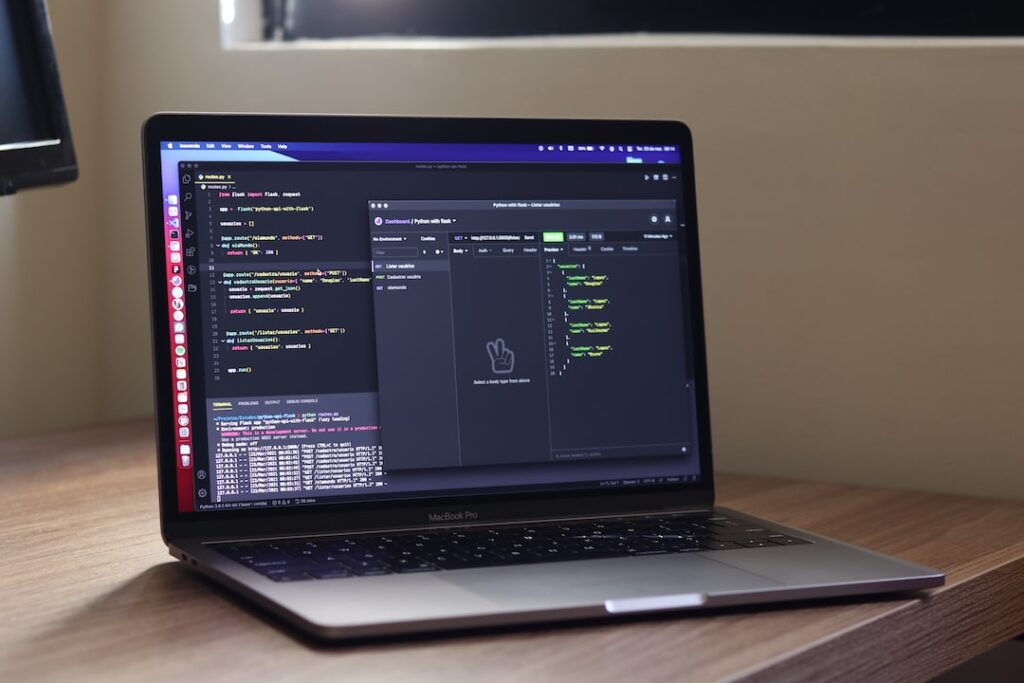
In the ever-evolving landscape of technology, staying ahead of the curve is paramount. Just like excelling in a popular game requires constant evaluation and improvement, monitoring and optimizing API performance is crucial for businesses to remain competitive. This analogy draws parallels between the fast-paced world of gaming, exemplified by Fortnite, and the dynamic realm of API development. By evaluating API performance metrics with the same meticulousness as a gamer strategizing their next move, organizations can identify bottlenecks, enhance user experience, and ultimately achieve their objectives efficiently. Join us on a journey where we delve into the realm of API performance evaluation, drawing inspiration from the gaming ethos of always seeking improvement and staying ahead of the game.
Understanding API Performance
To optimize API performance and enhance user experience in applications and games, developers can follow key metrics and best practices. Firstly, developers should focus on API management by designing clear API specifications, implementing robust authentication, and utilizing API gateways for efficient routing and load balancing. API management plays a crucial role in optimizing performance. This includes designing clear API specifications to ensure consistency and ease of use, implementing robust authentication mechanisms to secure the API endpoints, and utilizing API gateways for efficient routing and load balancing.
Secondly, having a developer portal with comprehensive API documentation, interactive consoles, code samples, and SDKs can improve developer experience. Providing a developer portal with comprehensive API documentation is essential. Interactive consoles, code samples, and SDKs can significantly improve the developer experience, making it easier for developers to integrate the API into their applications.
Encouraging API reuse and monetization through incentives and various monetization strategies is crucial for sustainable growth. Encouraging API reuse and monetization through various strategies and incentives is vital for sustainable growth and increasing the API’s value.
Governance and compliance ensure API quality and integrity. Ensuring that APIs comply with industry standards and regulations, as well as maintaining quality and integrity, is crucial for building trust with users and partners.
Furthermore, security is paramount in API performance. Implementing proper data encryption, threat protection, and rate limiting mechanisms can safeguard the API from malicious attacks and ensure data privacy. Regular security audits and vulnerability assessments should be conducted to identify and address potential security vulnerabilities.
Moreover, scalability is a critical aspect of API performance. Designing APIs with scalability in mind, such as utilizing caching mechanisms, asynchronous processing, and horizontal scaling, can help handle increased traffic and growing user demands effectively.
Lastly, analytics and performance monitoring, tracking metrics like API calls, response times, and error rates, provide insights for continuous improvement. Regular monitoring and optimization of key metrics such as API calls, response times, and error rates are crucial for maintaining and improving API performance. By adopting a holistic approach that includes API management, developer experience, governance, security, compliance, and scalability, developers can create high-performing APIs that meet user expectations and drive business success.
Lessons from Fortnite: Optimizing API Performance for a Seamless Gaming Experience
Fortnite, a global gaming sensation, has not only captured the hearts of millions with its captivating gameplay but has also set a benchmark in optimizing API performance to enhance the overall gaming experience. In this insightful section, we delve into the strategies and technologies employed by Fortnite to achieve superior API performance, offering valuable lessons for developers and gaming companies seeking to elevate their gaming infrastructure.
Strategic Load Balancing for Uninterrupted Gameplay
Fortnite’s adept utilization of cloud computing services has revolutionized its API performance. Through strategic load balancing techniques, the game dynamically allocates resources to manage varying player loads effectively. This approach ensures seamless gameplay experiences for users, even during peak demand periods when millions are actively engaging with the game.
Real-Time Data Processing and Analysis for Enhanced User Interactions
At the core of Fortnite’s API optimization strategy lies its advanced real-time data processing capabilities. By swiftly analyzing player interactions and game events, Fortnite can deliver responsive and immersive gaming experiences. Leveraging technologies like in-memory databases and stream processing, the game fosters an environment where players can enjoy instantaneous feedback and updates, enriching their overall engagement.
Secure and Efficient Content Delivery Networks for Global Reach
Fortnite’s commitment to global accessibility is evident in its strategic use of content delivery networks (CDNs) to optimize API performance. By strategically distributing game assets and data across geographically dispersed servers, Fortnite minimizes latency and ensures rapid content delivery to players worldwide. This approach not only enhances the gaming experience but also fosters a sense of inclusivity among a diverse player base.
Proactive Monitoring and Automated Scaling for Peak Performance
A key lesson to glean from Fortnite’s success is its proactive approach to monitoring API performance metrics. Through automated monitoring tools and scaling mechanisms, the game can detect and address performance bottlenecks in real time, ensuring consistent high performance across all gaming interactions. This commitment to continuous improvement and scalability is instrumental in maintaining Fortnite’s reputation as a leader in the gaming industry.
Fortnite’s dedication to optimizing API performance through dynamic resource allocation, real-time data processing, global content delivery networks, and proactive monitoring serves as a testament to the importance of a robust infrastructure in delivering unparalleled gaming experiences. By embracing the lessons learned from Fortnite’s API optimization journey, developers and gaming companies can strive to create immersive and seamless gaming environments that resonate with players on a global scale.
Evaluating API Performance
The performance of APIs plays a critical role in the success of businesses. To effectively evaluate API performance, businesses can leverage key tools and methods. API monitoring and analysis tools like New Relic, Datadog, or Prometheus play a crucial role in this process. These tools enable tracking of essential metrics such as response times, error rates, and overall API health status. By monitoring these metrics, businesses can gain valuable insights into the performance of their APIs and identify areas for improvement.
Furthermore, organizations can conduct performance testing using tools like JMeter or Gatling to simulate real-world usage scenarios and pinpoint potential bottlenecks. Performance testing is essential to ensure that an API can handle varying loads and usage patterns without experiencing performance degradation. By conducting thorough performance tests, businesses can proactively address performance issues and optimize their APIs for better efficiency.
Continuous monitoring and alerting systems should be implemented to proactively identify performance issues and ensure smooth API operations. These systems can automatically detect anomalies in API performance metrics and alert the relevant teams for immediate action. By setting up robust monitoring and alerting mechanisms, businesses can maintain high API availability and performance.
API performance evaluation involves a multi-faceted approach. Beyond just tracking metrics and conducting tests, businesses also need to consider the scalability and reliability of their APIs. Scalability is crucial to ensure that the API can handle increased loads without compromising performance. Load testing tools like Apache JMeter can help in evaluating how well an API scales under various load conditions.
Moreover, reliability is another key aspect that businesses must focus on. An unreliable API can lead to poor user experience, loss of customers, and damage to the brand’s reputation. Monitoring tools like Prometheus can assist in identifying patterns of downtime or errors, allowing businesses to take proactive measures to enhance API reliability.
In addition to monitoring and testing, optimizing API performance is an ongoing process. Businesses should regularly review and refine their API code, architecture, and infrastructure to ensure optimal performance. Employing caching mechanisms, optimizing database queries, and utilizing content delivery networks (CDNs) are some strategies that can help improve API speed and efficiency.
Furthermore, security is a critical component of API performance evaluation. Businesses need to prioritize security measures such as authentication, authorization, and data encryption to protect sensitive information and prevent potential security breaches that could impact API performance.
Evaluating API performance requires a comprehensive approach that encompasses monitoring, testing, scalability, reliability, optimization, and security. By utilizing a combination of tools, strategies, and best practices, businesses can ensure that their APIs deliver exceptional performance, reliability, and security in today’s digital landscape.
Best Practices for API Performance
Ensuring Optimal API Performance
-
Implement Caching: Utilize caching mechanisms to store frequently accessed data and reduce the number of calls to the server. This reduces latency and improves response times.
-
Use Efficient Data Formats: Choose lightweight data formats like JSON or Protocol Buffers over XML to minimize data size and improve transfer speeds. This not only enhances performance but also reduces bandwidth usage.
-
Optimize Database Queries: Write efficient database queries to retrieve only the necessary data and avoid unnecessary processing. Indexing, proper query structuring, and avoiding N+1 query problems can significantly enhance API performance.
-
Implement Rate Limiting: Prevent abuse and ensure fair usage by implementing rate limiting to control the number of requests a client can make within a specific timeframe. This helps in maintaining system stability and prevents overload.
Importance of Continuous Monitoring and Optimization
-
Monitor Performance Metrics: Regularly track and analyze key performance metrics such as response times, error rates, and throughput to identify bottlenecks. Real-time monitoring tools can help in proactive issue identification.
-
Automate Performance Testing: Incorporate automated performance testing into your development pipeline to catch performance regressions early. Continuous integration with performance tests ensures that changes do not degrade API performance.
-
Scale Responsively: Monitor usage patterns and scale resources dynamically to handle increased traffic and prevent performance degradation. Cloud services like AWS Auto Scaling can help in automatic resource provisioning.
-
Optimize for Mobile Clients: Design APIs to be mobile-friendly by minimizing network requests, utilizing caching, and optimizing payload sizes. Implementing adaptive designs and using mobile-specific optimizations can enhance user experience.
-
Security Considerations: Implement security best practices such as SSL/TLS encryption, input validation, and authentication mechanisms to protect APIs from attacks and data breaches. Security measures should not compromise API performance.
-
Versioning: Maintain backward compatibility and consider versioning strategies to ensure smooth transitions for API consumers. Proper versioning practices prevent disruptions and help manage API changes effectively.
-
Documentation: Provide comprehensive and up-to-date API documentation to assist developers in understanding API endpoints, request/response formats, authentication methods, and error handling. Clear documentation promotes ease of integration and reduces development time.
-
Error Handling: Implement robust error handling mechanisms to provide informative error messages, status codes, and troubleshooting guidance. Well-handled errors enhance the developer experience and aid in identifying and resolving issues promptly.
By following these best practices, continually monitoring performance metrics, and addressing security concerns, developers can establish high-performing APIs that deliver consistent and reliable services to users. Emphasizing proactive optimization, scalability, and user-centric design ensures that APIs meet evolving demands and maintain peak performance levels.
Conclusion
Evaluating API performance is crucial in staying ahead of the game in today’s competitive tech landscape. Just like Fortnite players constantly strive to improve their skills to outperform their opponents, developers and businesses need to regularly monitor and optimize their API performance to deliver the best user experience. By understanding the key metrics, conducting thorough testing, and implementing necessary adjustments, organizations can ensure that their APIs are efficient, reliable, and scalable to meet the demands of their users. Stay proactive, stay vigilant, and stay ahead in the API game!.







